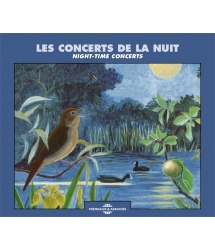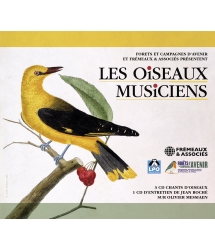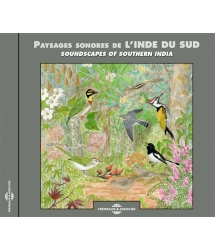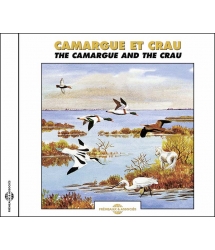- Our Catalog
- Philosophy
- Philosophers of the 20th century and today
- History of Philosophy (PUF)
- Counter-History and Brief Encyclopedia by Michel Onfray
- The philosophical work explained by Luc Ferry
- Ancient thought
- Thinkers of yesterday as seen by the philosophers of today
- Historical philosophical texts interpreted by great actors
- History
- Books (in French)
- Social science
- Historical words
- Audiobooks & Literature
- Our Catalog
- Jazz
- Blues
- Rock - Country - Cajun
- French song
- World music
- Africa
- France
- Québec / Canada
- Hawaï
- West Indies
- Caribbean
- Cuba & Afro-cubain
- Mexico
- South America
- Tango
- Brazil
- Tzigane / Gypsy
- Fado / Portugal
- Flamenco / Spain
- Yiddish / Israel
- China
- Tibet / Nepal
- Asia
- Indian Ocean / Madagascar
- Japan
- Indonesia
- Oceania
- India
- Bangladesh
- USSR / Communist songs
- World music / Miscellaneous
- Classical music
- Composers - Movie Soundtracks
- Sounds of nature
- Our Catalog
- Youth
- Philosophy
- News
- How to order ?
- Receive the catalog
- Manifesto
- Dictionnary











- Our Catalog
- Philosophy
- Philosophers of the 20th century and today
- History of Philosophy (PUF)
- Counter-History and Brief Encyclopedia by Michel Onfray
- The philosophical work explained by Luc Ferry
- Ancient thought
- Thinkers of yesterday as seen by the philosophers of today
- Historical philosophical texts interpreted by great actors
- History
- Books (in French)
- Social science
- Historical words
- Audiobooks & Literature
- Our Catalog
- Jazz
- Blues
- Rock - Country - Cajun
- French song
- World music
- Africa
- France
- Québec / Canada
- Hawaï
- West Indies
- Caribbean
- Cuba & Afro-cubain
- Mexico
- South America
- Tango
- Brazil
- Tzigane / Gypsy
- Fado / Portugal
- Flamenco / Spain
- Yiddish / Israel
- China
- Tibet / Nepal
- Asia
- Indian Ocean / Madagascar
- Japan
- Indonesia
- Oceania
- India
- Bangladesh
- USSR / Communist songs
- World music / Miscellaneous
- Classical music
- Composers - Movie Soundtracks
- Sounds of nature
- Our Catalog
- Youth
- Philosophy
- News
- How to order ?
- Receive the catalog
- Manifesto
- Dictionnary
BIRDS OF PAPUA AND NEW GUINEA - NEW GUINEA SOUNDSCAPES
FREMEAUX & ASSOCIES
Ref.: FA642
EAN : 3448960264228
Author : 23|130
Artistic Direction : JEAN ROCHE
Label : Frémeaux & Associés
Total duration of the pack : 1 hours 3 minutes
Nbre. CD : 1
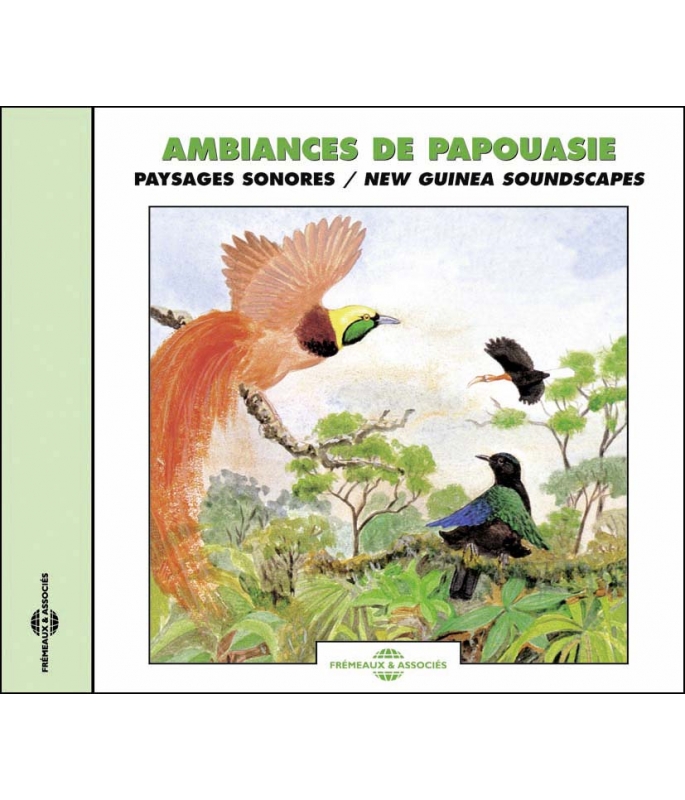
BIRDS OF PAPUA AND NEW GUINEA - NEW GUINEA SOUNDSCAPES
BIRDS OF PAPUA AND NEW GUINEA - NEW GUINEA SOUNDSCAPES
To the north-east of Australia, just below the Equator, Papua and New Guinea covers the eastern half of the second largest island on earth (Greenland being the larger). 725 species of birds occur here. This CD propose to first discover the most representative birds of mid-high habitats (1000 to 3500 meters) in 6 natural concerts. Then, a 28 tracks sound guide allows the listener to identify the most common birds. Recording made by Rémy Bruckert and Jean C. Roché and described in a 12 pages French and English booklet. Patrick Frémeaux
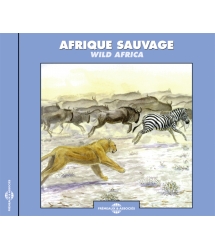
WILD AFRICA
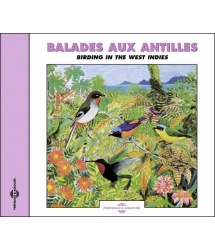
BIRDING IN THE WEST-INDIES
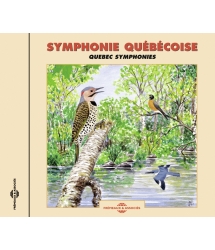
QUEBEC SYMPHONIES
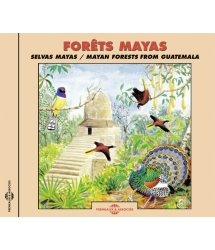
MAYAN FORESTS, SOUNDSCAPES FROM GUATEMALA - SELVAS...
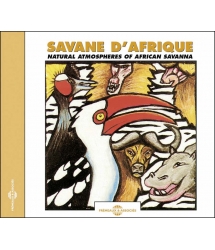
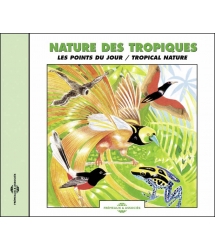
DUSK CHORUSES - TROPICAL NATURE






-
PisteTitleMain artistAutorDurationRegistered in
-
1Forêt Tropicale de Moyenne Altitude00:16:441993
-
2Au Pays des Huli dans la Vallée de Tari00:04:551993
-
3Forêt Tropicale de Haute Montagne00:08:431993
-
4Oiseau à Berceaux PapouArchold's Bowerbird (Archoldia paquensis)00:02:331993
-
5Oiseau Jardinier à Huppe OrangeStriped Gardener Bowerbird (Amblyornis subularis)00:07:151993
-
6Concert Nocturne à Wau00:06:131993
-
7Cassican à tête noireHooded Butcherbird (Cracticus cassicus)00:00:531993
-
8Carpophage de ZoéBanded Imperial-Pigeon (Ducula zoeae)00:00:431993
-
9Drongo à crinièreSpangled Drongo (Dicrurus hottentottus)00:00:391993
-
10Philémon CaronculéNoisy Friarbird (Philemon corniculatus)00:00:451993
-
11Kookaburra à Ventre RouxRufous-bellied Kookaburra (Dacelo gaudichaud)00:00:331993
-
12Perruche à ailes vertesPapuan King-Parrot (Alisterus chloropterus)00:00:191993
-
13Loriquet Arc en CielRainbow Lorikeet (Trichoglossus haematodus)00:00:461993
-
14Paradisier de RaggiRaggiana Bird-of-paradise (Paradisaea raggiana)00:00:341993
-
15Calao papouPapuan Hornbill (Aceros plicatus)00:00:221993
-
16Drongo à crinièreSpangled Drongo (Dicrurus hottentottus)00:01:051993
-
17Coucou plaintifPlaintive Cuckoo (Cacomantis merulinus)00:00:291993
-
18Philémon CaronculéNoisy Friarbird (Philemon corniculatus)00:00:401993
-
19Paradisier bleuBlue Bird-of-paradise (Paradisaea rudolphi)00:00:411993
-
20Paradisier superbeSuperb Bird-of-paradise (Lophorina superba)00:00:341993
-
21Origma Montagnard 1Rockwarbler (Origma solitaria)00:00:211993
-
22Origma Montagnard 2Rockwarbler (Origma solitaria)00:01:081993
-
23Méliphage de Belford 1Belford's Honeyeater (Melidectes belfordi)00:00:301993
-
24Dick RouxLittle Shrike-thrush (Colluricincla megarhyncha)00:00:281993
-
25Méliphage de Belford 2Belford's Honeyeater (Melidectes belfordi)00:00:481993
-
26Epimaque BrunBrown Sicklebill (Epimachus meyeri)00:00:421993
-
27Paradisier du Prince AlbertKing-of-Saxony Bird-of-paradise (Pteridophora alberti)00:00:301993
-
28Ninoxe bruneJungle Boobook (Ninox theomacha)00:00:361993
-
29Engoulevent ElfeLarge-tailed Nightjar (Caprimulgus macrurus)00:00:361993
-
30Insectes 100:00:261993
-
31Insectes 200:00:241993
-
32Cigales 100:00:331993
-
33Cigales 200:00:391993
-
34Amphibiens00:00:321993
AMBIANCES DE PAPOUASIE
AMBIANCES DE PAPOUASIE
Paysages sonores / new guinea soundscapes / A Ernst Mayr, pionnier de l’ornithologie papoue
Introduction
Au nord-est de l’Australie, juste en dessous de l’Equateur, la Papouasie-Nouvelle Guinée occupe la moitié orientale de la plus grande île de la planète, après le Groënland. Elle est traversée en écharpe par une longue chaîne volcanique dont les sommets dépassent 4000 m d’altitude. L’avifaune est représentée par 725 espèces dont les plus spectaculaires sont sans doute les Oiseaux de Paradis et les Oiseaux à berceaux. Les enregistrements de cet ouvrage ont été réalisés en novembre et décembre 1991 par Rémy Bruckert, et en août et septembre 1974 par Jean C. Roché, dans des milieux s’étageant entre 1000 et 3500 m d’altitude. Nous remercions la Société Ornithologique de Papouasie Nouvelle Guinée, et en particulier ses membres, Ian Barrows, Shoba Srinivasan, Bill Eddie, Will Glynn, Edel Kraayo ; ainsi qu’Errol Samuelson, ingénieur du son de la télévision de Nouvelle-Zélande, Clifford et Dawn Frith, ornithologues, pour l’aide apportée dans la réalisation des enregistrements.
1. Forêt tropicale de moyenne altitude.
Pimaga, village situé au cœur de la jungle et au centre de la Papouasie, non loin du Lac Kutubu, altitude 1000 m. A cette altitude, la température et l’humidité sont plus importantes que sur les hauts plateaux. L’élément liquide est omniprésent et permet le développement des sagoutiers qui poussent les pieds dans l’eau. Deux espèces dominent l’espace sonore : le Philémon caronculé dont le ramage mélodieux ne se rapporte pas à son plumage plutôt terne; et le Drongo à crinière, grand imitateur dont les cris font souvent penser au coin-coin de jouets d’enfants. Tôt le matin et en fin d’après-midi les cris des Paradisiers de Raggiana, emblème de la Papouasie, se rapprochent du village où ils viennent parader en bandes, toujours à bonne hauteur dans les mêmes arbres. Quelques cris rauques et un envol bruyant : c’est le Calao papou, recherché par les autochtones pour son bec orné de plis cornés. Les cris aigres des des Loriquets arc-en-ciel et le roucoulement du Carpophage zoé retentissent dans la canopée. Les Perruches à ailes vertes passent comme des fusées en poussant leurs cris stridents.
2. Au pays des Huli, dans la vallée de Tari, 2000 m d’altitude.
Au petit matin, les nuages planent encore bas dans la vallée, mais dès que le soleil aura réchauffé l’atmosphère, ils commenceront à s’effilocher pour aller s’accrocher sur les plus hauts sommets. Dans un petit bosquet isolé, non loin de la grande forêt dense, les premiers chants d’oiseaux se mèlent au clapotis des arbres qui s’égouttent. Soudain, les cris puissants et éraillés d’un Paradisier superbe, reconnaissable à son “nœud papillon” miroitant, percent la douce quiétude ambiante. Un Paradisier bleu se joint à lui dans une joute sonore que seule apaisera la chaleur montante.
3. Forêt tropicale de haute montagne.
Sur la route de Tari à Mendi, en haut d’Ambua Lodge, altitude 2500-3000 m. Tout ici est à la fois magnifique et sinistre, enchanteur et lugubre : les fougères arborescentes; les arbres gigantesques recouverts de mousse, de lichens, et d’orchidées épiphytes; les bruits inquiétants des feuilles de Pandanus qui s’entrechoquent dans le vent. C’est le domaine de prédilection des oiseaux de Paradis, dont plus de dix espèces peuvent être observées, comme le Paradisier du Prince Albert avec ses deux plumes étranges sur la tête, long chapelet d’écailles bleutées qui le font ressembler à un sémaphore lorsqu’il égrenne sa ritournelle. L’Epimaque brun, Oiseau de Paradis au long bec en faucille, fait entendre dans ce concert son drôle de cri percutant de mitraillette. Les plus bruyants sont cependant les Melliphages de Belford qui se gavent de nectar de fleurs, et l’Origma montagnard, au comportement discret, qui se remarque plus par ses sifflements plaintifs que par son plumage fade.
Les concerts 4 et 5 constituent un bref aperçu des productions sonores étonnantes de deux Oiseaux à berceaux lors de leurs parades nuptiales. Pour séduire la femelle, parader et s’accoupler, les mâles édifient une construction de brindilles qu’ils décorent d’objets colorés divers (souvent des baies et des coquilles d’escargots) et qui, selon les espèces, peut prendre la forme d’un tunnel, d’un mât, ou d’une hutte. Autour de son œuvre, qui peut être réutilisée plusieurs années, le mâle effectue une chorégraphie complexe accompagnée de chants et de “bruits” étranges.
4. Oiseau à berceaux papou / Archboldia papuensis.
Forêt de haute montagne de Tari à Mendi, en haut d’Ambua Lodge, altitude 2500-3000m.
5. Oiseau-jardinier à huppe orange / Amblyornis subularis.
Chaîne de montagne Owen Stanley, au nord de la capitale Port Moresby, altitude 1200 m.
6. Concert nocturne à Wau, près de l’Institut d’Ecologie.
Sur la rumeur fluctuante des criquets et des cigales se détachent les chants de la Ninox brune et de l’Engoulevent elphe, puis les coassements d’un amphibien. C’est le domaine des insectes. Plus de 600 espèces peuvent être recensées en une seule nuit. Les cigales peuvent atteindre 15 cm de longueur. Leur stridulation, d’abord timide, s’élève lentement puis s’amplifie en un vacarme qui perce les tympans. La marée sonore peut s’arrêter subitement comme elle est est venue, ou se dérouler comme une vague au sein de la forêt.
Guide sonore - 28 extraits numérotés de 7 à 34 et d’une durée totale de 16’30”.
Concert 1
07. Cassican à tête noire / Cracticus cassicus
08. Carpophage zoé / Ducula zoeae
09. Drongo à crinière / Dicurus hottentottus
10. Philémon caronculé / Philemon buceroïdes
11. Kookaburra à ventre roux / Dacelo gaudichaud
12. Perruche à ailes vertes / Alisterus chloropterus
13. Loriquet arc-en-ciel / Trichoglossus haematodus
14. Paradisier de Raggiana / Paradisea raggiana
15. Calao papou / Aceros plicatus
16. Drongo à crinière / Dicrurus hottentottus
17. Coucou plaintif / Cacomantis merulinus
18. Philémon caronculé / Philemon buceroïdes
Concert 2
19. Paradisier bleu / Paradisea rudolphi
20. Paradisier superbe / Lophorina superba
Concert 3
21. Origma montagnard / Crateroscelis robusta
22. Origma montagnard / Crateroscelis robusta
23. Melliphage de Belford / Melidectes belfordi
24. Dick roux / Colluricincla megarhyncha
25. Melliphage de Belford / Melidectes belfordi
26. Epimaque brun / Epimachus meyeri
27. Paradisier du Prince Albert / Pteridophora alberti
Concert 6
28. Ninox brune / Ninox theomacha
29. Engoulevent elfe / Caprimulgus macrurus
30. Insectes
31. Insectes
32. Cigales
33. Cigales
34. Amphibiens
Rémy Bruckert & Jean C. Roché
© 1993 SITTELLE – 2007 FRÉMEAUX & ASSOCIÉS
To Ernst Mayr, pioneer of Papuan ornithology
english notes
Introduction
To the north-east of Australia, just below the Equator, Papua and New Guinea covers the eastern half of the second largest island on earth (Greenland being the larger). It is crossed in the centre by a long volcanic mountain chain with the highest peaks being over 4000 metres. 725 species of birds occur here, the most spectacular are without doubt the birds of paradise and the bowerbirds. The recordings used in this work were made during November and December 1991 by Rémy Bruckert, and during August and September 1974 by Jean C. Roché, in habitats at altitudes between 1000 and 3500 metres. We would like to thank the Papua and New Guinea Ornithological Society and in particular its members, Ian Barrows, Shoba Srinivasan, Bill Eddie, Will Glynn and Edel Kraayo; as well as Errol Samuelson, sound engineer with New Zealand television; and Clifford and dawn Frith, ornithologists, with their help in the making of the recordings.
1. Mid altitude tropical forest
Pimaga, a village in the heart of the jungle near the centre of Papua, not far from lake Kutubu, at 1000 m. At this altitude, both temperature and humidity are greater than on the high plateau. Water is omnipresent which allows the Sago-palm to grow with the base of its trunk in water. Two species calls dominate all others : the Timor Helmeted Friarbird whose rather drap plumage belies its melodious warbling; and the Spangled Drongo, a good mimic whose calls often remind one of the squeak of a child’s toy. In the early morning and late afternoon the calls of the Raggiana Bird of Paradise, the emblem of Papua, come closer to the village. This is when the birds arrive to display in groups, always high up in the same trees. A few raucous calls, and a noisy take off : it’s Blyth’s Hornbill, in demand by the local for its beak decorated with horny folds. The harsh calls of Rainbow Lory and the cooing of the Banded Imperial Pigeon resound in the forest canopy. Green-winged King parrots shoot-by giving their strident calls.
2. In the land of the Huli, in the Tari valley, at 2000 metres
In the early morning, the clouds still float at the bottom of the valley, but as soon as the sun has warmed the atmosphere, they start to break up and rise to cling to the highest peaks. In a small isolated thicket, not far from the thick forest, the first snatches of bird song mix with the dripping of moisture from the trees. All of a sudden, the loud and raucous cries of a Superb Bird of Paradise, recognizable by its glistening “bow-tie”, pierce the ambient calm. A Blue Bird of Paradise joins him in a musical joust which alone will appease the rising heat.
3. The high mountain tropical forest
On the road from Tari to Mendi, above Ambua Lodge, at a height of 2500-3500 metres. Everything here is at once magnificent and sinister, enchanting and gloomy : the tree-ferns; the giant trees covered in moss, lichens, and epiphytal orchids; the disquieting noise from the leaves of the Screw Pines as they rub together in the wind. It’s the prefered habitat of the birds of paradise, of which more than ten species can be seen here, such as the King of Saxony Bird of Paradise with two bizarre feathers adorning its head and a long rosary of bluish scales which make it look like a semaphore when it goes through its jingle. The Brown Sicklebill, a bird of paradise with a long decurved bill, makes itself heard in this concert with its machine-gun like call. The most noisy are, however, the Belford’s Melidectes which gorges itself on nectar, and the Mountain Mouse Warbler, of unobstrusive habits, which is known more for its plaintive whistling than its dull plumage.
Concert 4-5 give a quick impression of the astonishing vocal outputs of two species of bowerbirds during their courtship displays. In order to seduce the female and mate, the male builds a construction of twigs which they decorate with various coloured objects (often berries or snail shells) and which, depending on the species, can take the shape of a tunnel, a pole, or even a hut. Around this masterpiece, which may be used for several years, the male performs a complex ballet accompanied by different snatches of song and strange noises.
4. Archbold’s Bowerbird / Archboldia papuensis
High mountain forest between Tari and Mendi, above Ambua Lodge, altitude 2500-3000 metres.
5. Striped Gardener Bowerbird / Amblyornis subularis
The Owen Stanley mountain chain, to the north of Port Moresby, the capital, altitude 1200 metres.
6. Nocturnal concert at Wau, near the Institute of Ecology
Against a fluctuating background noise made by crickets and cicadas, the song of the Brown Owl and the Long-tailed Nightjar can be distinguished, then the croaking of an amphibian. This is the domain of insects. More than 600 species can be recorded in one night. Cicadas can grow to a length of 15 cm. Their chirring, quiet at first, slowly increases and is amplified into a ear-pearcing uproar. This tide of sound can stop as suddenly as it started, or move along like a wave through the forest.
Sound guide - 28 indexed entries, numbered from 7 to 34 with a total playing time of 16’30”.
Concert 1
07. Black-headed Butcher Bird / Cracticus cassicus
08. Banded Imperial Pigeon / Ducula zoeae
09. Spangled Drongo / Dicurus hottentottus
10. Timor Helmeted Friarbird / Philemon buceroïdes
11. Rufous-bellied Kookaburra / Dacelo gaudichaud
12. Green-winged King Parrot / Alisterus chloropterus
13. Rainbow Lory / Trichoglossus haematodus
14. Raggiana Bird of Paradise / Paradisea raggiana
15. Blyth’s Hornbill / Aceros plicatus
16. Spangled Drongo / Dicrurus hottentottus
17. Plaintive Cuckoo / Cacomantis merulinus
18. Timor Helmeted Friarbird / Philemon buceroïdes
Concert 2
19. Blue Bird of Paradise / Paradisea rudolphi
20. Superb Bird of Paradise / Lophorina superba
Concert 3
21. Mountain Mouse Warbler / Crateroscelis robusta
22. Mountain Mouse Warbler / Crateroscelis robusta
23. Belford’s Melidectes / Melidectes belfordi
24. Rufous Shrike Thrush / Colluricincla megarhyncha
25. Belford’s Melidectes / Melidectes belfordi
26. Brown Sicklebill / Epimachus meyeri
27. King of Saxony Bird of Paradise / Pteridophora alberti
Concert 6
28. Brown Owl / Ninox theomacha
29. Long-tailed Nightjar / Caprimulgus macrurus
30. Insects
31. Insects
32. Cicadas
33. Cicadas
34. Amphibians
Rémy Bruckert & Jean C. Roché, Adapted in English by Tony Williams
© 1993 SITTELLE – 2007 FRÉMEAUX & ASSOCIÉS
Droits audio : Frémeaux & Associés - La Librairie Sonore (Producteur initial : Sittelle ou Ceba) / Ecouter les chants d'oiseaux sur CD : Sons et ambiances naturelles des écosystèmes - Stéreo and digital recording of the natural landscape sound. Natural sound sceneries of écosystems, Voices of the Wild Life. Les droits de cet enregistrement sont protégés par la loi. Pour toute exploitation d’illustration sonore sur CD, DVD, CD-Rom, Télévision, Cinéma, Sites internet, scénographies (théâtre, musées…), l’autorisation et un devis gratuit peuvent être obtenus auprès de Frémeaux & Associés – fax : +33 (0)1 43.65.24.22 info@fremeaux.com
